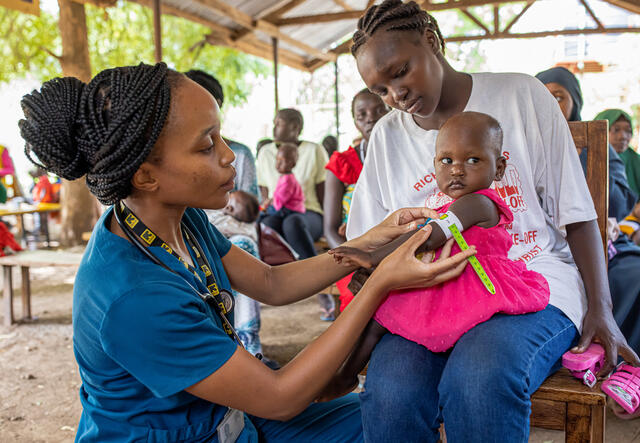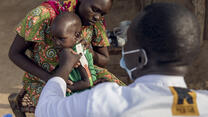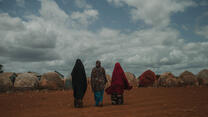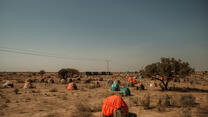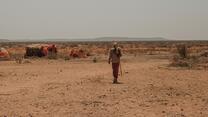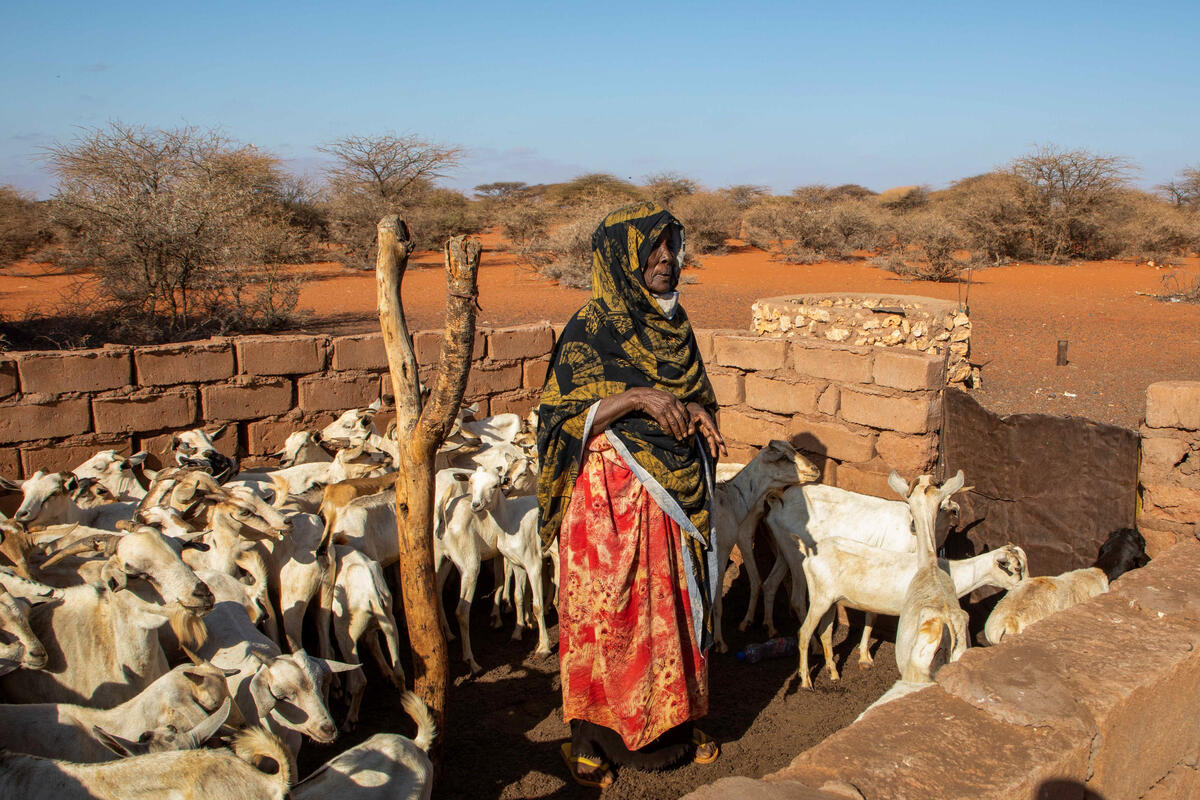
Over 14 million people across Somalia, Ethiopia and Kenya - about half of them children - are on the verge of starvation.
Right now, people are dying of hunger in Somalia, and without action, we will soon see mass deaths there. Hundreds of thousands of people are on the move to try and find food and water - with many not making the journey. In Somalia alone, over half a million people have already fled their homes in search of food and water since the start of 2022.
Across East Africa extreme hunger is on the rise. The region is entering a fifth consecutive season without enough rainfall, surpassing the failed rains of the 2011 famine where over 250,000 people died.
The situation has been steadily deteriorating for two years, despite repeated warnings. The lives of millions of people are at stake without urgent attention. More people will become displaced, more will go hungry and more will die of hunger and thirst.
Famines are not common. So what does the declaration of a famine mean and what can we do to help?
What is famine?
A famine is declared when a certain set of conditions have been met. This criteria includes at least 30% of a country's children suffering from severe malnutrition. That means, by the time a famine is declared, children are already starting to die because their parents cannot give them enough food to survive. It’s already too late.
That is why immediate action is needed in Somalia and East Africa to avoid mass deaths.
What are the main causes of famine?
Famines are caused by multiple factors including conflict and climate. A famine is not a natural disaster but a result of human actions or lack of action to prevent it. They do not happen overnight; they develop over time until they cause massive harm and suffering.
There are many factors causing the catastrophe unfolding in East Africa. Right now, the La-Niña-induced drought from four consecutive failed or below-average rainy seasons is causing food insecurity for millions of people across Ethiopia, Somalia and Kenya.
Droughts occur every few years in East Africa but climate change means they are becoming more frequent. The current drought is nearly double the length and intensity of the one that triggered a famine in 2011— a famine that killed a quarter of a million people.
These are the driest conditions with the highest temperatures in the region for more than 40 years.
In addition, COVID-19 and the consequences of the war in Ukraine are pushing East Africa into catastrophe. The war in Ukraine has made an already serious situation in East Africa even worse. Somalia relied on Russia and Ukraine for 90% of its wheat before the war.
When is famine declared?
The Integrated Food Security Phase Classification (IPC) describes the severity of food emergencies. The five-phase scale acts as a warning system for governments and humanitarian organisations to take action.
The IPC grades a crisis in five levels, with the most severe being famine:
- Level one: Food Security
- Level two: Food Insecurity
- Level three: Acute Food and Livelihood Crisis
- Level four: Humanitarian Emergency
- Level five: Famine
Three conditions need to be met before it declares a level 5 famine:
- 1 in 5 households in a certain area face extreme food shortages;
- More than 30 percent of the population is acutely malnourished; and
- At least two of every 10,000 people die each day.
What happens in a famine?
Famine is more than just hunger. The effects can last a lifetime.
Famine destroys futures.
Malnutrition rates in Somalia have doubled since the start of the year and have increased by 75% in Kenya.
Malnutrition is already deadly, especially in infants and young children. Children are particularly affected because they are still growing. The majority of those at risk of death are children, whether they are dying from starvation or from preventable diseases that their weakened bodies cannot fight off.
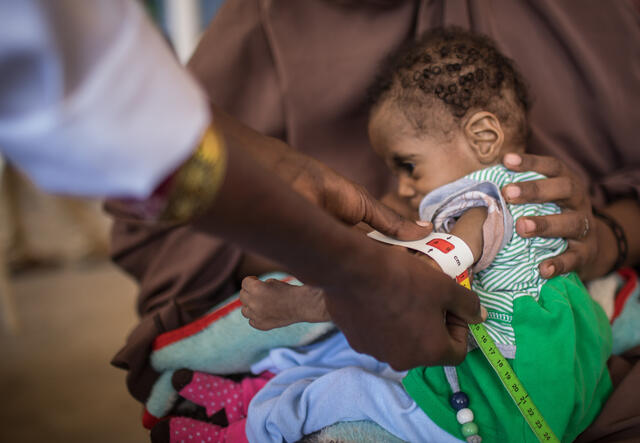
The children who do survive will live with the consequences for the rest of their lives. Their growth will be stunted and they will be at greater risk of dying from future illnesses. They also tend to have a higher risk of having underweight or premature children, passing on these consequences to future generations.
Famine fuels violence and insecurity.
Global threats like terrorism grow out of poverty and political and economic instability. Conflict spreads in famine areas and other places where food and resources are scarce. People are displaced from their homes and lose their means of earning a living: This lack of opportunity is fodder for terrorist recruitment.
Famine destroys societies.
We are at risk of losing an entire generation to starvation - children who are their communities’ best hope for a more peaceful and stable future.
How can we stop famine?
The international community helped avoid famine in East Africa in 2017 because it took early action. It is not doing so now. Millions of dollars are needed immediately, so the entire humanitarian response can scale up massively.
Delaying action until a famine is officially declared is morally wrong and guarantees that any response will be inadequate. Every day of delay will cause suffering to grow. Hundreds of thousands of people are already living on so little food that they are in physical pain, their children’s growth has been stunted and they are selling off all their possessions.
Global leaders must prioritise ending the hunger crisis. Famines are always predictable and preventable. We know that getting aid into the right hands can save millions of lives. But, we also must tackle the root causes of the problem including conflicts around the world.
What is the IRC doing?
East Africa is home to some of the IRC’s longest-running programs globally, with operations in Somalia for over 40 years, Kenya for 30 years, and Ethiopia for 20 years. Today, over 2,500 staff in the region are scaling up our programmes to address the current drought and rising food insecurity, including expanding to new areas to meet needs.
The IRC has invested heavily in resilience building in the region and urges all parties to collaborate on managing shocks such as the Ukraine crisis and COVID-19, which are compounding an already dire situation. International leaders must apply learning from the catastrophic events of 2011.
- Somalia: The IRC provided assistance to Somalis through the 2011 famine and the 2016/17 drought, giving us clear insights into the risks communities face. Our water, health, nutrition and livelihoods programmes reach 280,000 Somalis a year. In light of recent droughts and flooding, our efforts are focused in the South-West, Galmudug, Galgaduud, Banadir, and Puntland provinces, providing emergency relief, primary healthcare, and protecting vulnerable populations.
- Ethiopia: The IRC reaches over 3.2 million clients across the country each year through programmes in environmental health, child protection, economic recovery, and women’s empowerment. In 2021, we further provided critical assistance to over 100,000 refugees and more than 500,000 Ethiopians affected by natural disasters.
- Kenya: IRC teams deliver lifesaving emergency aid including healthcare, women’s protection, and legal rights education to refugee populations and their host communities. Our health, nutrition and conflict resolution programs in Kenya have delivered critical care to over 300,000 people a year, including nutrition support for malnourished children and supporting refugees and vulnerable Kenyans to start businesses and rebuild their lives.
